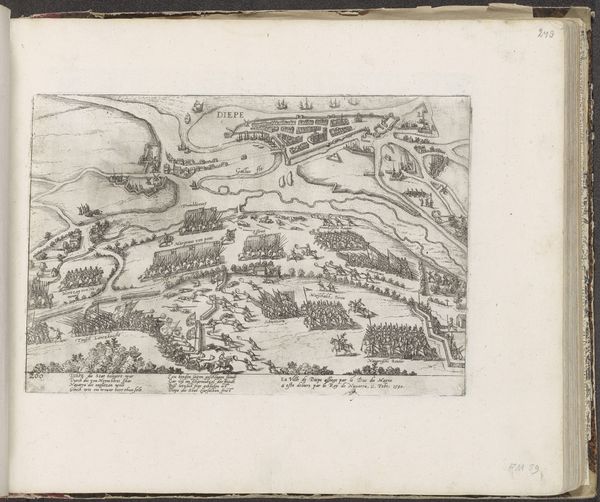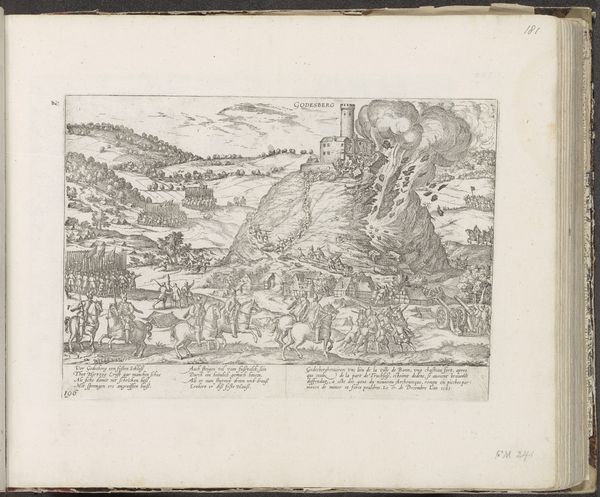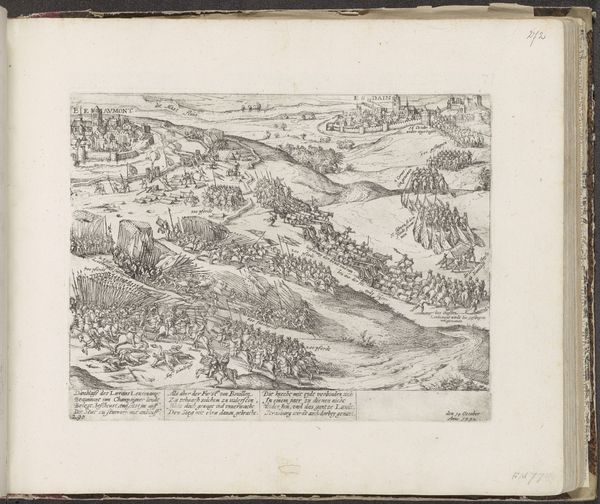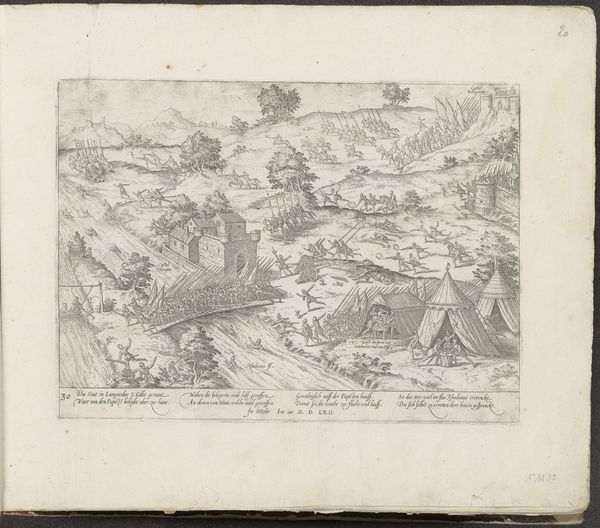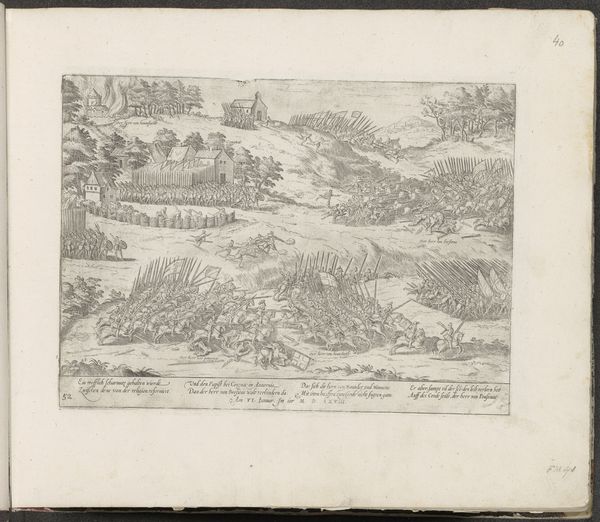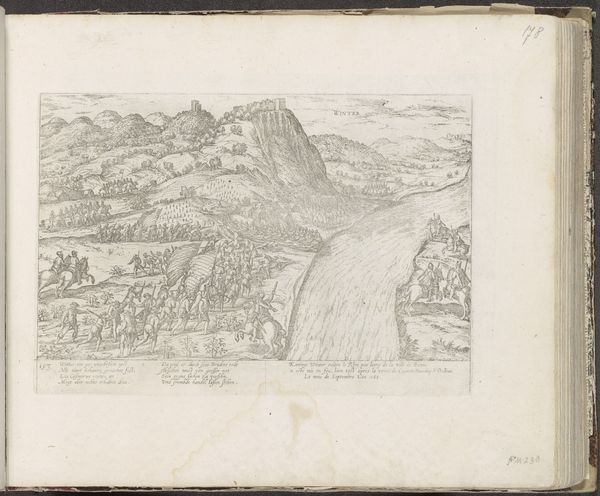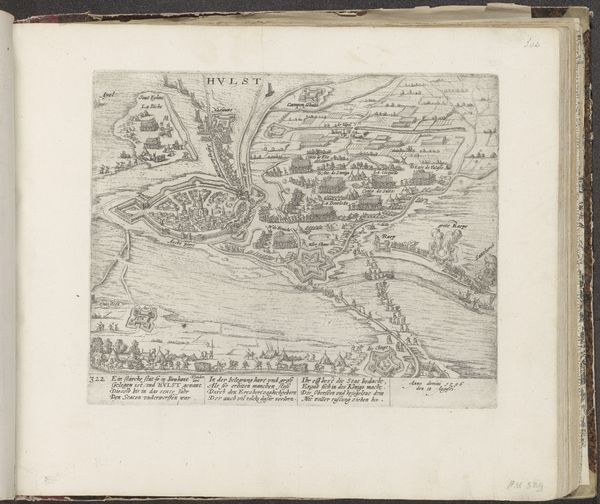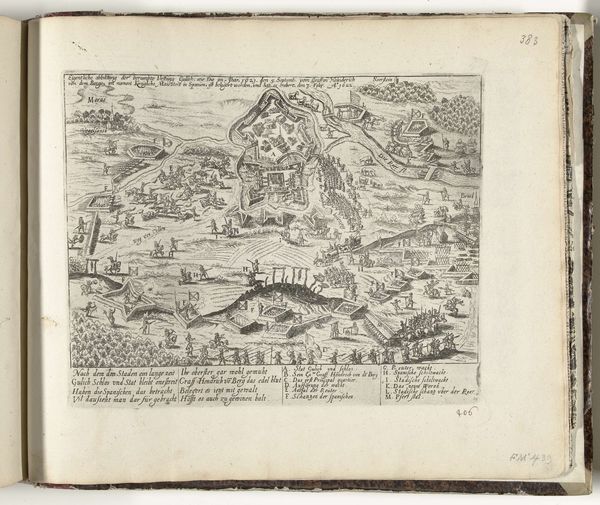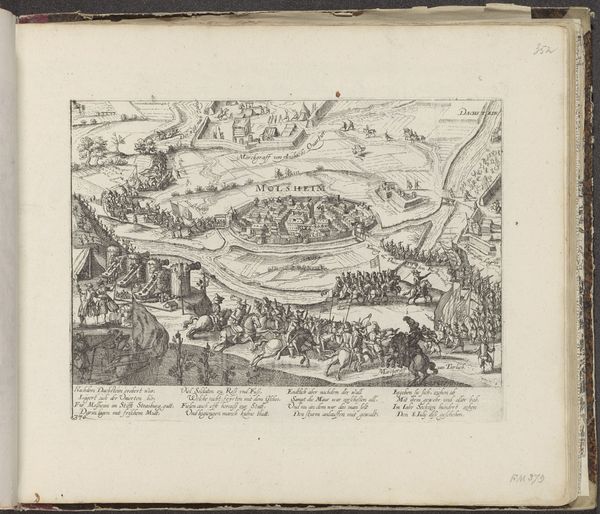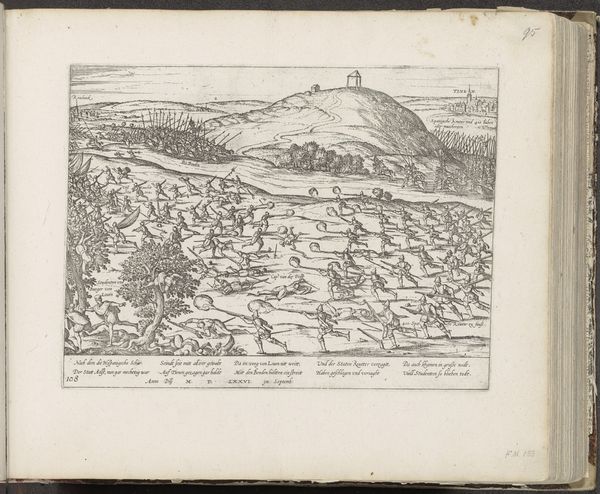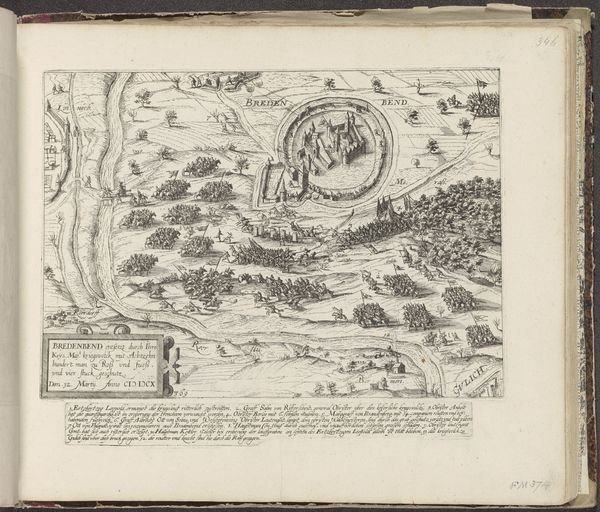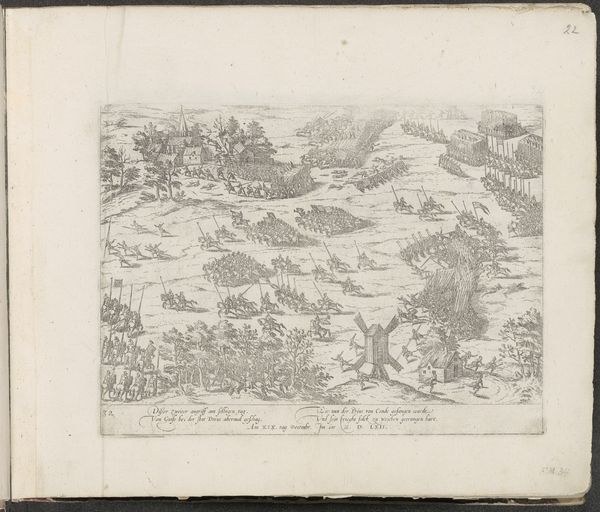
print, engraving
#
ink painting
# print
#
pen sketch
#
mannerism
#
figuration
#
genre-painting
#
history-painting
#
engraving
Dimensions: height 206 mm, width 272 mm
Copyright: Rijks Museum: Open Domain
Editor: This engraving, "Spanjaarden verslagen bij Luik, 1577" (Spaniards Defeated at Liège, 1577), by Frans Hogenberg, plunges us into a chaotic battle scene. The sheer number of figures crammed onto this small print is quite striking. How should we interpret it? Curator: Let’s consider the materiality of this engraving. What does it mean to depict a battle, a messy, physical event, through the controlled and reproducible medium of print? This wasn't simply about documenting history; it was about manufacturing and distributing a specific narrative about power. Editor: So, the print itself becomes a tool? What kind of power are we talking about here? Curator: The power to shape public opinion. Look closely – how does Hogenberg portray the Spanish soldiers versus their opponents? The print functions almost like propaganda, swaying popular sentiment through visual representation. The level of detail afforded in the engraving process allows for the dissemination of highly specific and potentially biased information. Editor: That's a really interesting point! So, the choice of printmaking isn't just practical, it's inherently political. Does the availability of prints affect who gets to see it, and therefore, who's opinions are being swayed? Curator: Precisely. Printmaking allowed for wider access to imagery than painting. Consider where these prints might have been circulated – perhaps in pamphlets, newspapers, or even displayed in public spaces. Who would have had access to these materials, and what impact would these depictions of war have on their understanding of the conflict and its stakes? How does labor factor in as well; engraving is physically grueling work that makes art less of an aristocratic luxury and more a result of more people having access? Editor: It changes the narrative completely, from one of artistry to one of material and access. Curator: Exactly. We need to consider the print not just as an artwork, but as a produced object, embedded within a complex web of social, economic, and political relations. Thinking about its purpose really opened up another layer to the print, I never really saw before. Editor: Absolutely! Analyzing it as a tangible product that reflects and shapes historical narratives gives this artwork an even bigger, bolder voice.
Comments
No comments
Be the first to comment and join the conversation on the ultimate creative platform.
